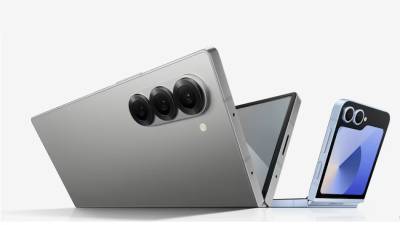It’s hard not to get excited when someone promises a laptop that lasts all day, runs cool, and throws in a bit of AI flair—just because it can. Qualcomm thinks it has cracked the code with its Snapdragon chips. But here’s the question we should all be asking: is this really the future of laptops, or just a well-polished sales pitch?
Running on Empty? Not Anymore
Remember when carrying a charger felt as essential as carrying the laptop itself? Those days might be numbered. Snapdragon-powered devices like the HP OmniBook X 14 and Microsoft’s Surface Laptop 7 are clocking in over 20 hours of battery life—sometimes pushing 25. That’s not theoretical lab stuff; people are actually getting through two workdays without scrambling for a socket.
It's impressive. But battery life alone doesn't make a laptop great—right?
Fast Enough... But for What?
On paper, the Snapdragon X Elite chip flexes some serious muscle. Multi-core benchmarks? It’s trading blows with Apple’s M3 and making certain Intel chips look dated. But here’s where expectations meet reality—if you’re editing 4K video or running complex simulations, things might not feel as snappy.
For browsing, office work, streaming, and even light creative tasks, it’s more than enough. But if your workflow leans on heavy software—especially apps not optimized for ARM—you could find yourself waiting longer than you’d like.
The Compatibility Catch
Let’s talk about the elephant in the room: software. Windows on ARM isn’t exactly new, but it’s still finding its footing. Sure, native apps run like a dream. Microsoft Office? Smooth. Edge browser? No problem. But that quirky tool you’ve been using since 2015? That’s where emulation steps in—and not always gracefully.
Qualcomm’s Prism emulator is getting better, no doubt. Yet, if your daily grind depends on legacy x86 apps, you might want to think twice before jumping ship.
AI Features: Cool Trick or Game-Changer?
Of course, no modern tech product is complete without mentioning AI. Snapdragon laptops come with built-in NPUs (that’s Neural Processing Units, if you’re keeping score). They promise smarter video calls, faster image edits, and voice assistants that actually understand you.
Sounds fancy. But let’s be real—most people aren’t buying a laptop because it can blur their background a bit better on Zoom. Right now, AI is more of a nice-to-have than a must-have.
So, Why Aren’t We All Using Them?
If Snapdragon laptops offer killer battery life, decent performance, and a sprinkle of AI magic—why aren’t they everywhere? Simple answer: habits are hard to break. People trust what they know—Intel, AMD, maybe Apple. Snapdragon? It’s still the newcomer in a conservative market.
With only 0.8% market share so far, it’s clear Qualcomm has some convincing to do. Early adopters are intrigued, but the average buyer? Still cautious.
The Verdict: Future Icon or Footnote?
Snapdragon laptops aren’t just hype—they deliver where it counts for most users. If you value battery life, quiet performance, and live mostly in a browser or standard apps, they make a strong case.
But perfection? Not yet. Software quirks and the skepticism of a market slow to change are real hurdles.
So, is this a revolution? Maybe. But like any revolution, it won’t happen overnight.






__thumb__120x120__70__f17a05b0b66158ca4a66016ea3b3bbd1.jpg)





